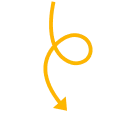Nervous System
Nervous System
We can split the nervous system into
- the central nervous system, which includes the brain and spinal cord, and
- the peripheral nervous system, pretty much all the nerves that branch out from that.
We’ll see some different structures and cell types depending on where we look, but the overall purpose of the nervous system is to send and receive electrical signals. Like the power lines that send electricity through a city, each nerve is made of clusters of smaller neuron cells.
In a transverse cross section neurons look like little circles.
And when we slice a nerve long ways for a longitudinal view and see the long axons running the length of the nerve.
The naming for nerves sounds similar to muscle bundle naming. Remember how for muscles you have perimysium, epimysium and endomysium? Well in nerves, We have perineurium, epineurium and endoneurium.
The cell body, or soma, has a nucleus inside. Branching out from there are any number of dendrites, branches that collect electrical impulses from other cells. They sum up at the axon hillock where an impulse will travel down the axon. The axon can be over 95% of the volume of the neuron cell — and they can be long like over a metre long.
These axons are what we just cut open on the cross section and most of what we see on longitudinal sections. Finally, the neuron ends at the axon terminals. They send messages in the form of neurotransmitters to other cells through synapses.
Some axons are thin, while some have a squishy layer around them that helps them transmit signals faster. It’s called a myelin sheath, so we say that those neurons are myelinated. And, we can find an endoneurium surrounding it. Depending on the layers, the sizes can differ too.
- Myelinated type A – 4-20 micrometres – 70 to 120 metres a second
- Type B – 1 to 4 micrometres
- Type C – 0.2 to 1.5 micrometres – 0.5 to 2.5 metres per second
Not only can axons vary, but the branching pattern can vary too.
- Multipolar
- most common
- brain, spinal cord
- Bipolar
- Nose and retina
- they only send afferent, or sensory information
- Unipolar
- Cell body and a single axon – dendrites
But neurons aren’t the only type of cell in the nervous system. We also have glial cells, essentially supportive cells.
For instance, astrocytes support and protect our neurons by regulating the blood brain barrier, helping form synapses, and clearing excess neurotransmitters. They’re kind of hard to see with traditional light microscopes, so unless you have an electron microscope you probably won’t get quizzed on it.
Oligodendrocytes are another fun one — they help make the myelin sheath around neurons in the brain and spinal cord, while Schwann cells make the myelin in the peripheral nerves.
Quick summary, this all started with our bundles of neurons organised into peripheral nerves like electrical wires in a cable. But we still have some big deal nervous tissue to tackle — the central nervous system, including the brain and spinal cord. Luckily for us, we can get our bearings with the spinal cord similarly to how we did the peripheral nerves.
The longitudinal section looks familiar, but different and the transverse cross section is super unique.
This cross section shows two different colours to work with — which come from myelin status. Since those myelin sheaths are so fatty and fluffy, think of myelinated fibres like marshmallows that make up white matter, while those dense, slow, unmyelinated fibres are the grey matter.
Since the grey matter falls into this shape, we label these segments horns. And we have anterior, lateral, and dorsal horns.
But there’s another big component to the central nervous system, the brain.
Let’s look at these two different colours, since their tissue level anatomy is different. Before we get to neurons, we have a few layers of connective tissue called the meninges. If you’ve heard of the disease meningitis, it’s inflammation of these layers.
The most superficial layer is the dura mater, a layer of dense connective tissue that sticks to the skull. Deeper than that is the arachnoid layer which is thin and looks like spider webs, hence the name, and connects to the delicate thin pia mater underneath.
And aside from some connective tissue around blood vessels, all the other structures of the brain can be classified as nervous tissue. But like I said, layers. The outermost layer of the cerebrum is the cerebral cortex, and deeper than that, the subcortical white matter. The cerebral cortex has 6 layers of its own and only a couple of cell types to differentiate between.



